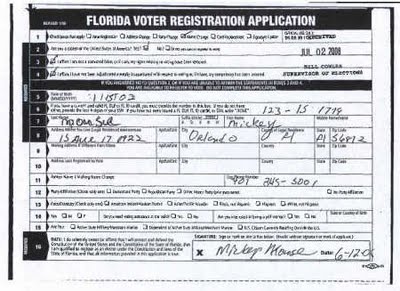During a trip to India a few years ago and after observing the New Delhi traffic, I devised a great idea for Tata, the Indian car maker: manufacture the cars so that once the car is started the horn turns on and stays on until the car is turned off. I was sure the drivers in New Delhi would appreciate such a feature, seeing that they drive with the horn on most of the time anyway.
Kind of like the way that politicians of Indian descent are making their presence known in the American political scene, except maybe not as noisy. While there are others, two prominent Indian-American politicians stand out: Louisiana Governor Piyush “Bobby” Jindal and South Carolina Governor Nikki Haley.
Following two terms in Congress representing Louisiana’s 1st congressional district in the House, and having been the Congress’ second Indian-American, Republican Bobby Jindal was first elected governor of Lousiana in 2007 and re-elected earlier this year in a landslide. Throughout his term as governor he has become known as a fiscal conservative who refused to raise taxes. After the BP Oil Spill of April-July, 2010, Jindal loudly criticized Obama administration’s response and eventually persuaded the administration into lifting a permit moratorium on oil drilling in the Gulf of Mexico.
South Carolina Governor Nikki Haley, whose election was part of the GOP’s victorious wave of 2010, also appears to be a rising star in conservative politics. Endorsed by Sarah Palin and supported by the local tea party activists, Gov. Haley sees the most important part of her job as recruiting jobs to South Carolina. Recently, she was able to work out a deal with the unions so that they dropped their complaint with the National Labor Relations Board that halted construction of a Boeing plant in South Carolina. Haley also signed an illegal immigration law, patterned on the controversial Arizona immigration law. Most of this law was recently overturned by a federal judge, and South Carolina is appealing the ruling. Earlier this month Haley endorsed Mitt Romney for president, and Gov. Romney quickly arranged a campaign trip through South Carolina, with Haley by his side.
Both Govs. Jindal and Haley have been suggested for vice-presidential candidates or future presidential candidates, although Gov. Haley has specifically ruled out a 2012 VP run.
Other Indian-American candidates to watch in 2012 include Ricky Gill, a young Republican challenger for Congress in California’s central valley, and Amerish Bera, who is again trying to unseat incumbent Republican Congressman Dan Lungren in the Sacramento area in California. Raja Krishnamoorthi is also a candidate for the Democratic nomination in an Illinois Congressional race. As reported in a recent Politico article and according to the Federal Election Commission website, all these candidates have reported impressive fund-raising so far.
2010 also saw the election of a Bangladeshi-American to Congress, Democratic Hansen Clarke of Michigan, who is currently seeking re-election in a safe Democratic district. Clarke ran as a fiscal conservative, suggesting that the debt can be paid down by cutting taxes.
Congressman Clarke was elected with the help of the Indian American Leadership Initiative (IALI), a Democratic political action committee set up to help Indians run for office. “I think there is a lot of excitement on the Democratic and Republican sides because we [Indian-Americans] are underrepresented in Congress,” Kathy Kulkarni, IALI president recently told Politico. “There is a desire that’s stronger than ever to see more Indian representation, and it’s growing.”
Republican Indian-Americans have also set up a PAC to help elect conservative Indian-Americans, the Republican Indian Committee (RICPAC). In a recent Newsmax article, RIC political director Jody Venkatesan, wrote “it is an exciting time to be a Republican Indian-American.”
Demographically, Indian-Americans are a small but growing ethnic group. In fact, according to the 2010 Census, Asians and Indians in particular are the fastest growing ethnic group in the United States, and tends to be well-educated and higher-income. In a December 14 speech at a meeting for the American India Foundation (AIF), Assistant Secretary of State for South and Central Asia, Robert Blak, said that “Indian-Americans have among the highest if not the highest per capita incomes of all groups in the United States.” Regarding the political influence of Indian-Americans, he said “if you look at the growth of India caucus, it is the most influential caucus on the Capitol Hill. The reason for that is the activism and the energy of the Indian-American community.”
In time, we should expect to see more Indian-Americans holding elective office in the U.S., maybe someday even being elected president, and sooner than we think. Just a few years ago no one would have predicted that a little car company in India would own the iconic car brands Jaguar and Land Rover, but today those brands are part of the Tata Motor Company.

COMMENTS
Please let us know if you're having issues with commenting.